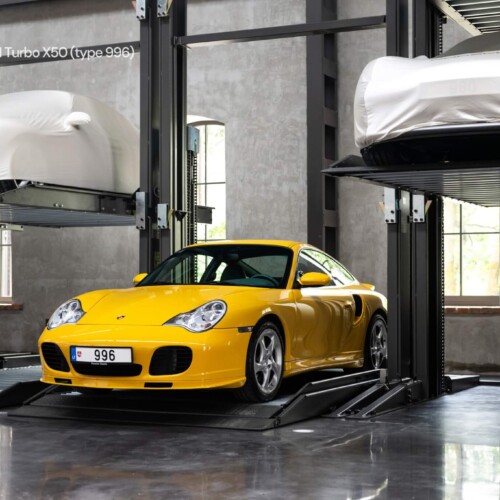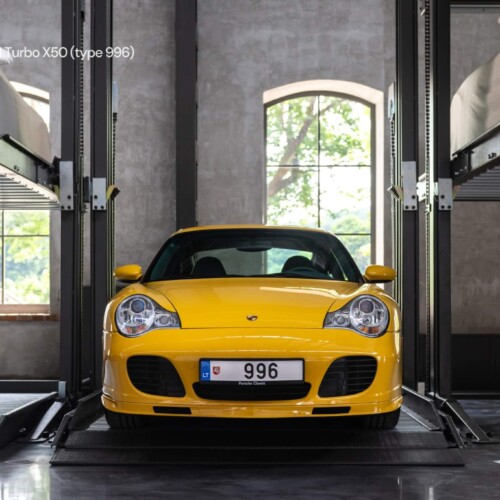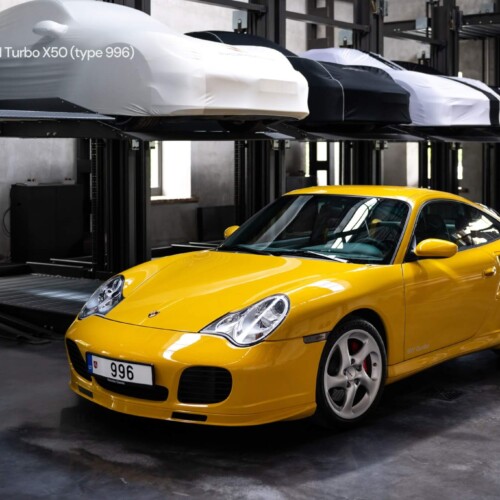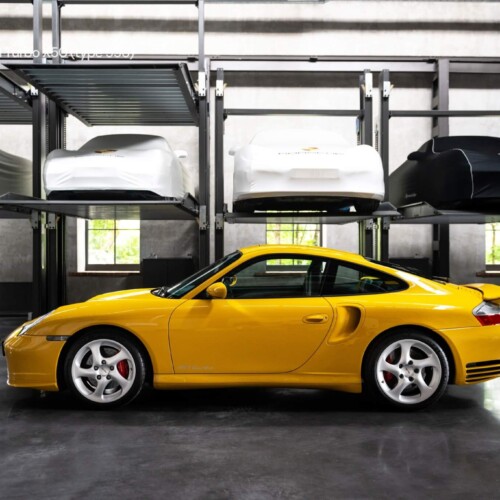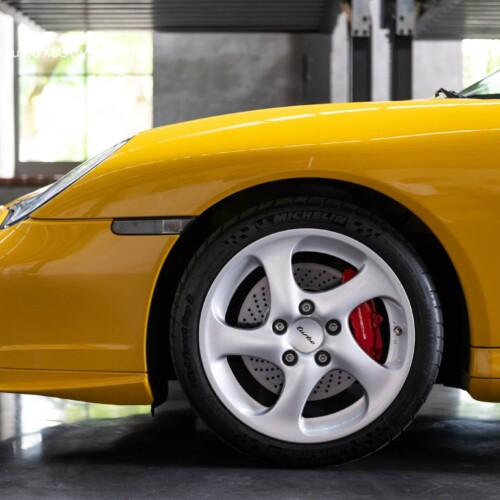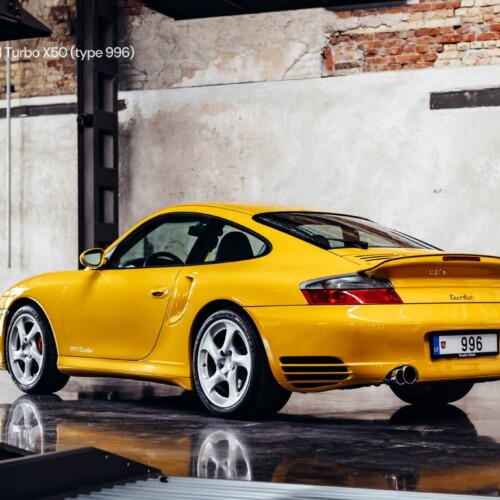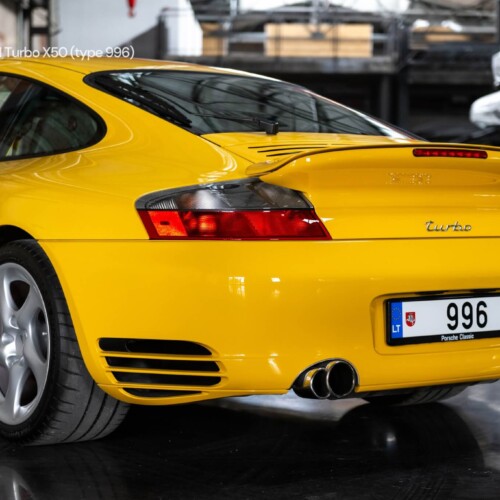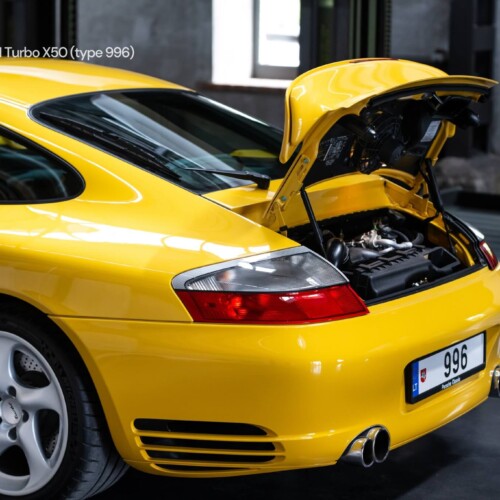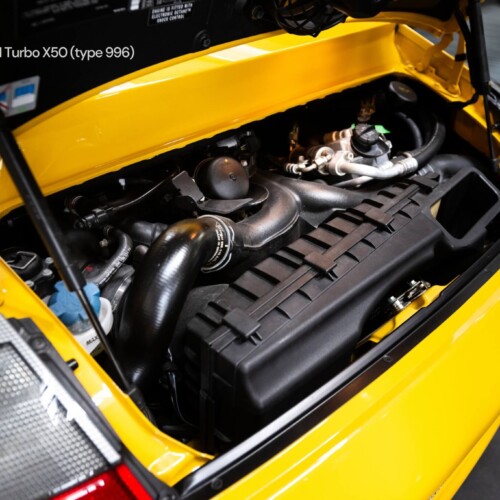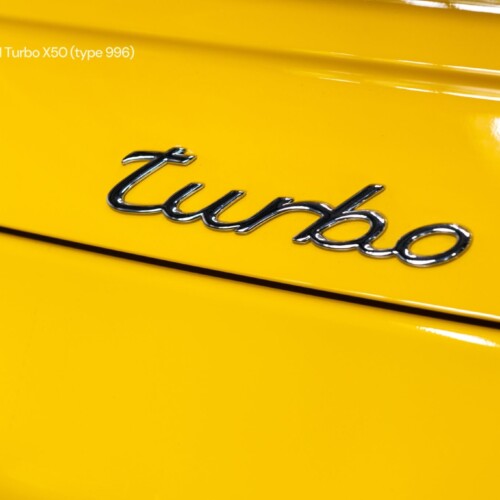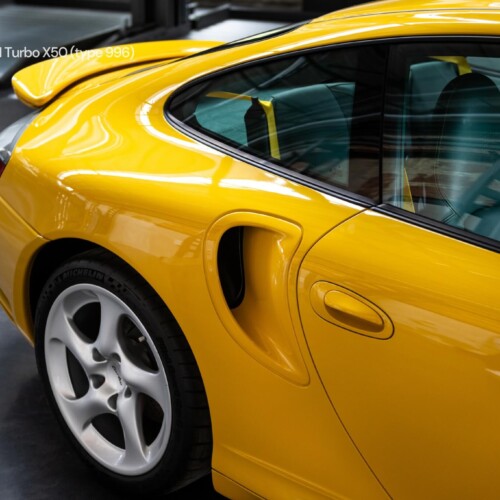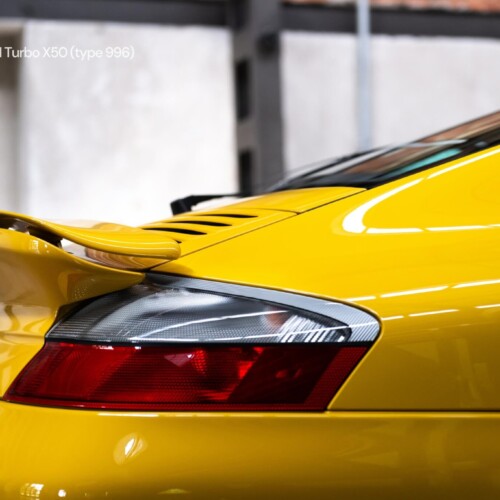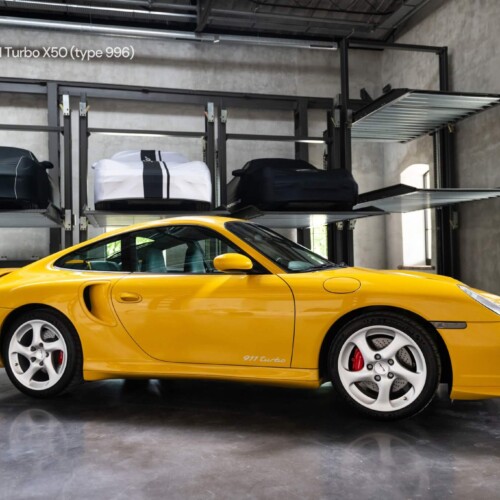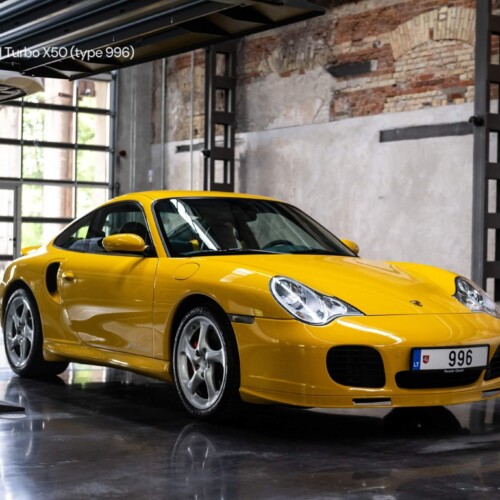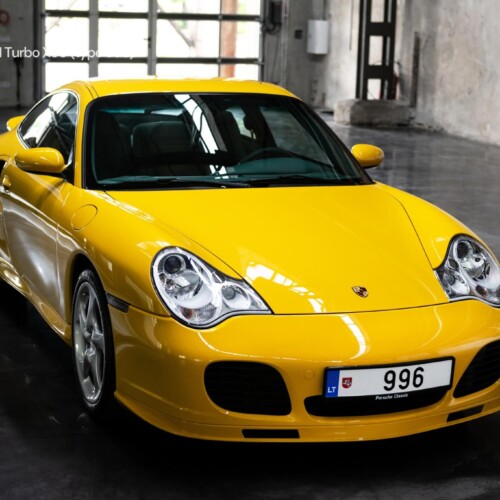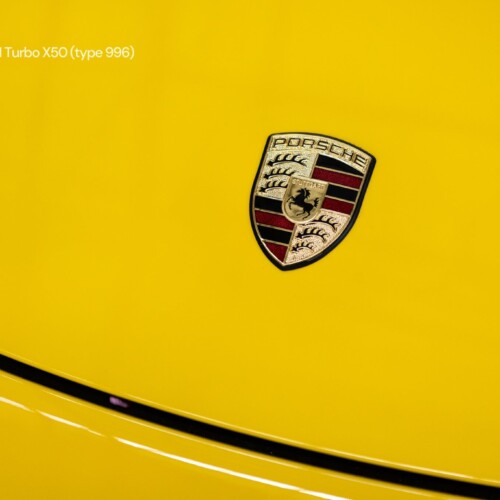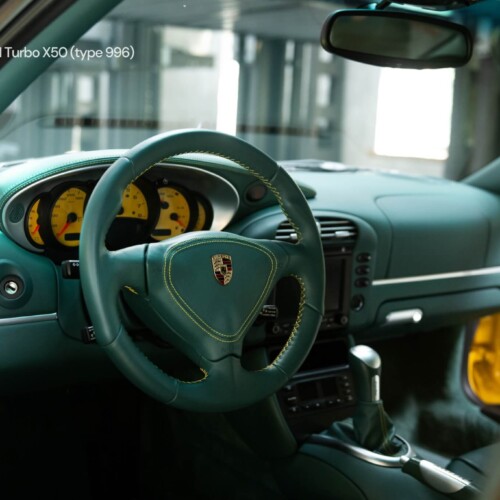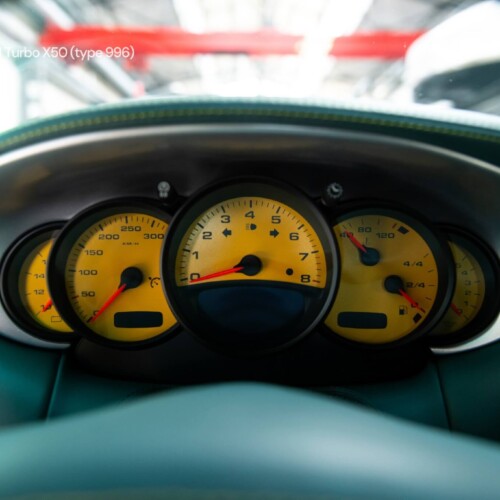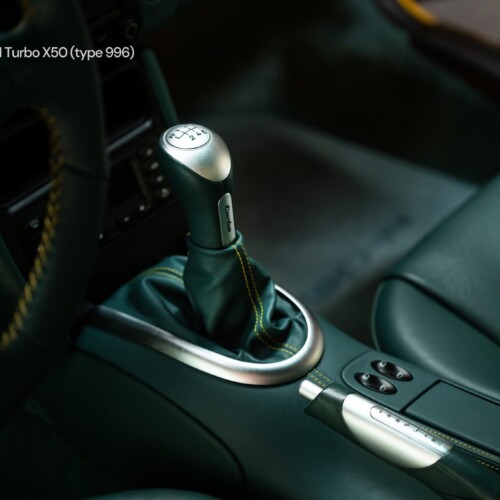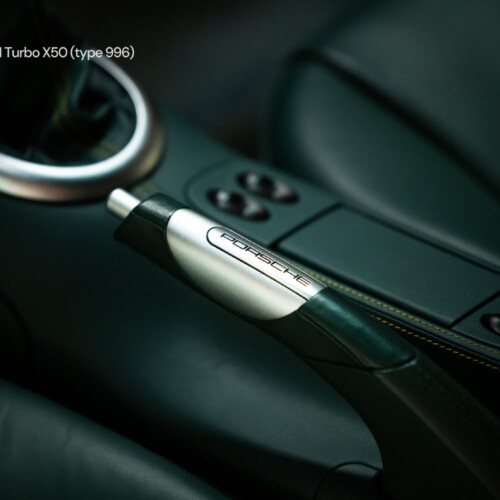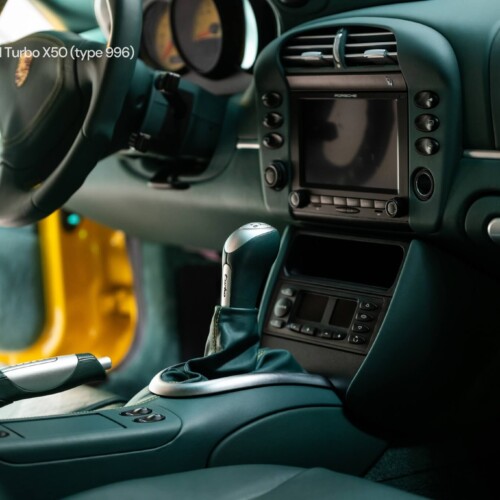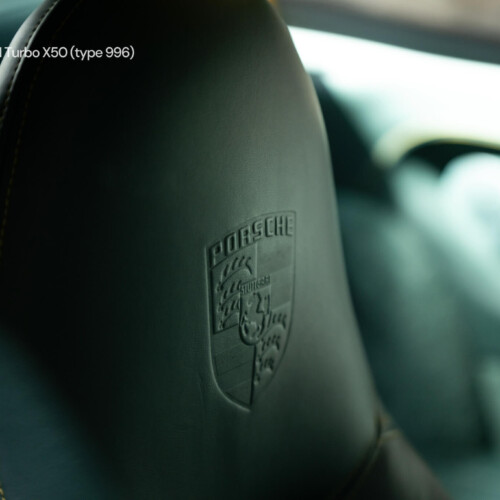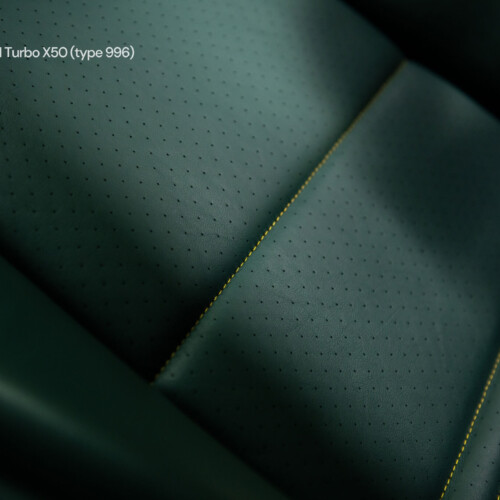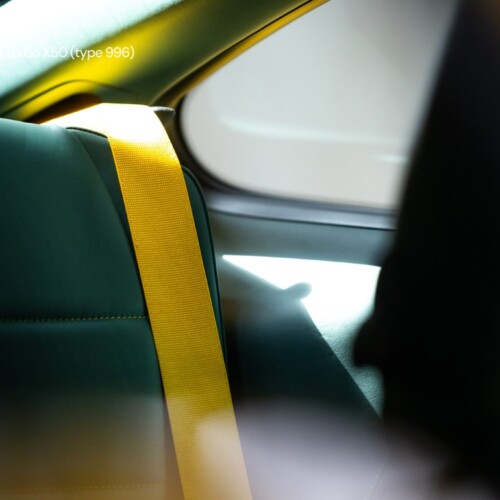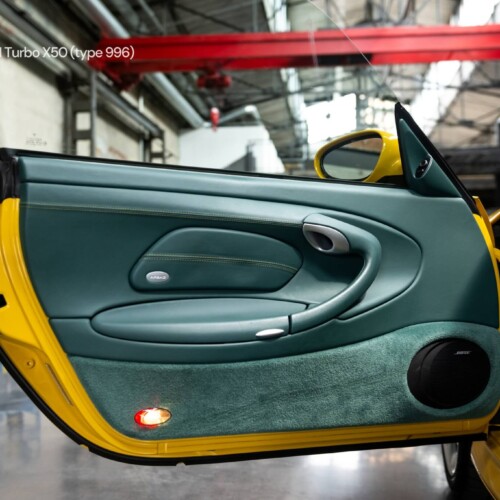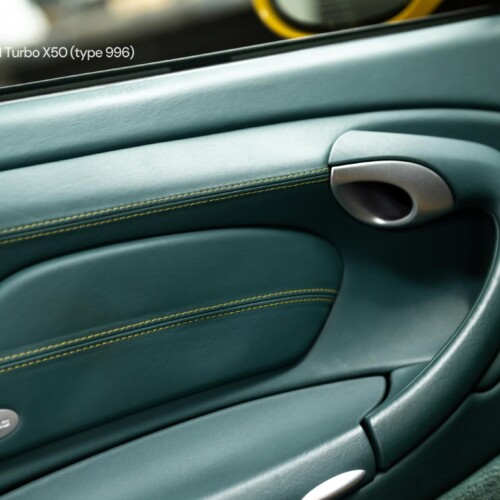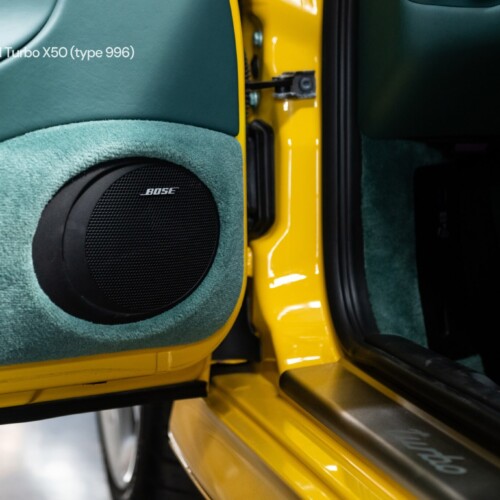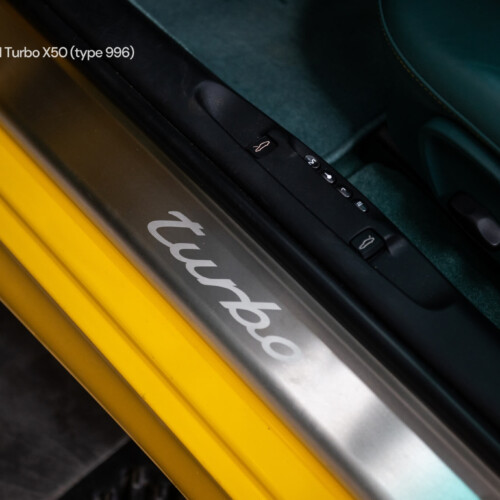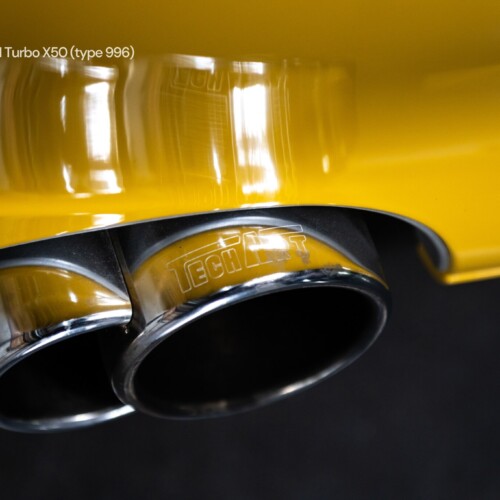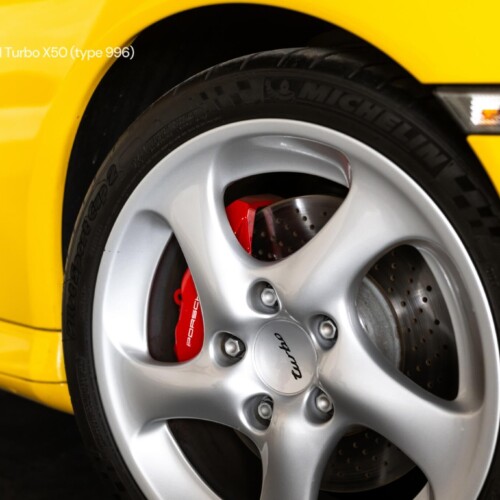#POR996-003-001
#POR996-003-001
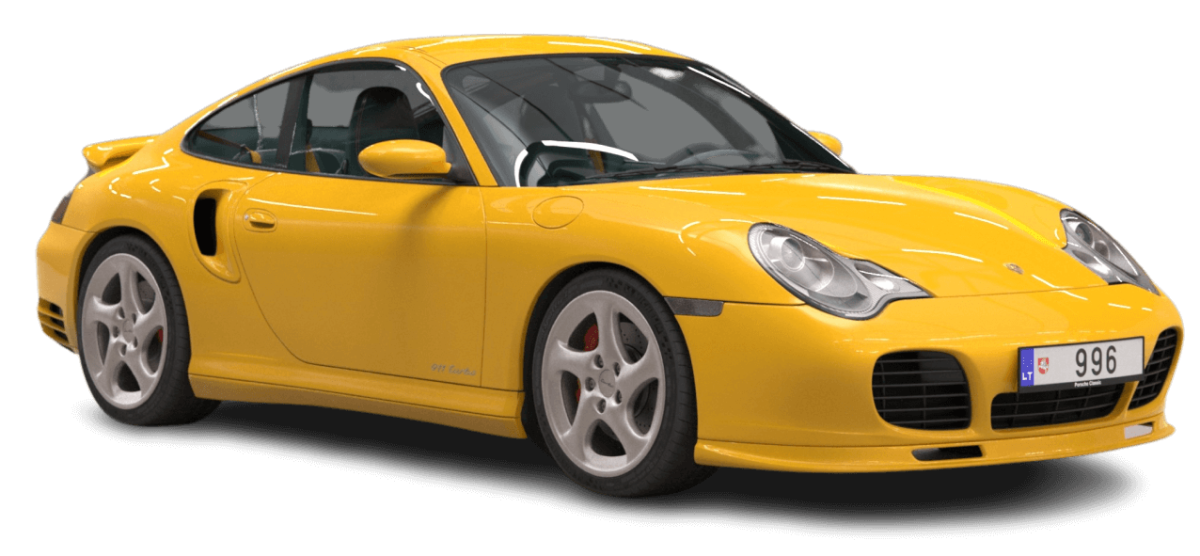
The 2003 Porsche 911 Turbo is the fifth generation of the famous Porsche 911, also known as 996. Only a few 996 Turbo models were sold with a manual 6-speed transmission, and even fewer with the factory X50 power package, making this car highly sought after by collectors.
PERFORMANCE
The 996 Turbo comes in the distinctive Speed Yellow color with a matching full leather Nephrite Green interior and is powered by a water-cooled 3.6-liter twin-turbo six-cylinder petrol engine. The engine produces 420bhp as standard, accelerating from 0 to 100km/h in 4.2 seconds. The X50 Power Pack boosts the output to 450bhp and reduces the 100km/h time to just 3.6 seconds. The all-wheel-drive system ensures excellent grip and stability at high speeds, while the brakes are designed to handle the extreme power of the 996 Turbo.
DESIGN
Compared to the previous 993 Turbo model, the 996 brought a new era of Porsche design, featuring smoothed lines, a swept-back windscreen, and a more spacious interior. The car’s structure is 45 percent stronger and lighter, and it comes with updated chassis and brakes that perfectly match the engine’s performance.
REPUTATION
The Porsche 911 Turbo X50 is popular among car enthusiasts and drivers who seek quality, power, and speed. It competes with other premium supercars like the Ferrari 458 Italia, Lamborghini Huracan, and Audi R8 Spyder. The X50 package provides an optimal balance of speed, power, and handling, as noted by Jeremy Clarkson, who said, “It hurts me to say this, but of all the cars that can be bought today, this is the best.”
1948
Porsche unveiled the first aerodynamic model 356, which was named after the car’s design project number. The initial 52 cars were hand-assembled.
1963
The Porsche 911 was introduced to the market, replacing the 1948 model, which was the first Porsche 356 in production. The 911 was designed as a larger and more practical version of the 356, with two extra seats in the back. The first 911s had 2-liter, 130-hp six-cylinder engines and were priced at $5,500.
1966-1968
Porsche rapidly expanded the 911 range as follows:
In 1966, they introduced the innovative 911 Targa with a removable roof.
In 1967, they introduced the 911 Sportomatic with semi-automatic transmission and the powerful 911 S model.
In 1968, they released the more affordable 911 T.
1975
Porsche introduces the 911 Turbo (model 993) in the North American market. It’s a supercar that combines outstanding power, luxury, and everyday practicality.
1978
Porsche introduces the 928. It is radically different from the 911 and features a front-mounted, liquid-cooled 240-horsepower V-8 engine. The 911 becomes the 911 SC, featuring a 3.0-liter engine and a host of enhancements.
1983
First 911 Cabriolet introduced. In the US, the Cabriolet outsells the Targa and quickly accounts for about one-third of 911 sales.
1984
911 now known as the Carrera, featuring greater performance from a 3.2-liter engine.
1990
Porsche introduces the all-wheel drive 911 Carrera 4 and the rear-wheel drive 911 Carrera 2. The cars share just 15 percent of their parts with the previous 911. New Tiptronic automatic transmission available for the Carrera 2 provides choice between fully automatic shifting and clutchless manual shifting.
1996
The 911 Turbo features the all-wheel drive system from the 911 Carrera 4, dual turbochargers and intercoolers and 400 horsepower.
1998
Porsche introduces the first 100-percent all-new 911 model since the first one in 1964. The new car breaks with 911 tradition by using a liquid-cooled engine — though it’s still a horizontally opposed six.
2001
In model year 2001, the turbo-free time at Porsche came to an end. The 911 Turbo Coupe (996) was introduced.
Its 3.6-liter twin-turbo engine delivered 420 horsepower. The Turbo featured all-wheel drive and a six-speed manual transmission as standard.
ENGINE
The 911’s first liquid-cooled engine replaced the air-cooled engines of previous models due to tightening noise and pollution emission requirements, which indicated a challenging future for air-cooled engines. Porsche introduced not only a new engine but also a completely new, wider chassis. This move received mixed reviews from Porsche fans – some were shocked by this decision, while others welcomed it as a long-awaited and necessary step not only for the 911 but also for the future of Porsche in general.
UNIQUE HEADLIGHTS
The 911 has traditionally featured round headlights, which have become a very recognizable symbol of the 911. The introduction of the 996 with its new headlight shape, combined with amber turn indicators, caused quite a stir among Porsche fans and immediately earned the nickname “fried eggs”.
The designers of this model, Pinky Lai and Grant Larson, created these lights not only for their uniqueness and aesthetics, but also to meet changing safety requirements. The new lights seamlessly integrated into the lines of the front and bumper of the car, and there were not many manufacturers who chose to combine the lights with the turn indicators.
However, with the arrival of the sixth-generation 911, known as the 997, these unique lights were once again replaced with round ones.
ANIMATION
The animation studio Pixar immortalized the 996 in the popular 2002 movie “Cars”. The animated blue 996, named Sally Carrera and voiced by actress Bonnie Hunt, garnered attention. Following the release of the film, Porsche commissioned a life-size version of the animated character Sally, which is now on display at the Porsche Museum in Stuttgart.
In 2022, for the 20th anniversary of the cartoon, Porsche and Pixar collaborated on a one-off road-going 911, the Porsche 911 Sally Special, based on the 992 Carrera GTS. The 911 Sally Special is painted Sally Blue Metallic with silver headlight surrounds, has a rear badge, a Sally tattoo on the rear spoiler, and “Kachow Mode” instead of the traditional “Sport Response” seen on the regular 992 Carrera GTS.
This unique model was sold at RM Sotheby’s for $3,600,000 on August 22, 2022, with proceeds benefiting Girls Inc. and the US UNHCR refugee agency.
